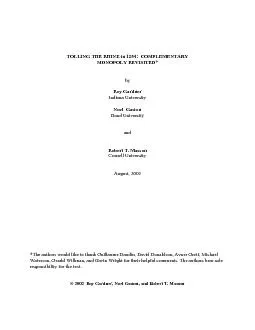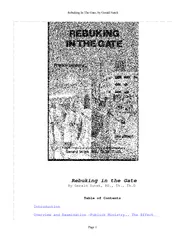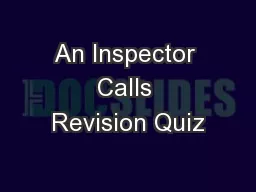PDF-*The authors would like to thank Guillaume DaWaterson, Gerald Willman,
Author : briana-ranney | Published Date : 2017-11-25
1 Introduction the Rhine LeagueEvery year millions of tourists in hand embark on a Rhine cruise historical landmarks but also the scene of interesting Nash equilibria
Presentation Embed Code
Download Presentation
Download Presentation The PPT/PDF document "*The authors would like to thank Guillau..." is the property of its rightful owner. Permission is granted to download and print the materials on this website for personal, non-commercial use only, and to display it on your personal computer provided you do not modify the materials and that you retain all copyright notices contained in the materials. By downloading content from our website, you accept the terms of this agreement.
*The authors would like to thank Guillaume DaWaterson, Gerald Willman,: Transcript
Download Rules Of Document
"*The authors would like to thank Guillaume DaWaterson, Gerald Willman,"The content belongs to its owner. You may download and print it for personal use, without modification, and keep all copyright notices. By downloading, you agree to these terms.
Related Documents














